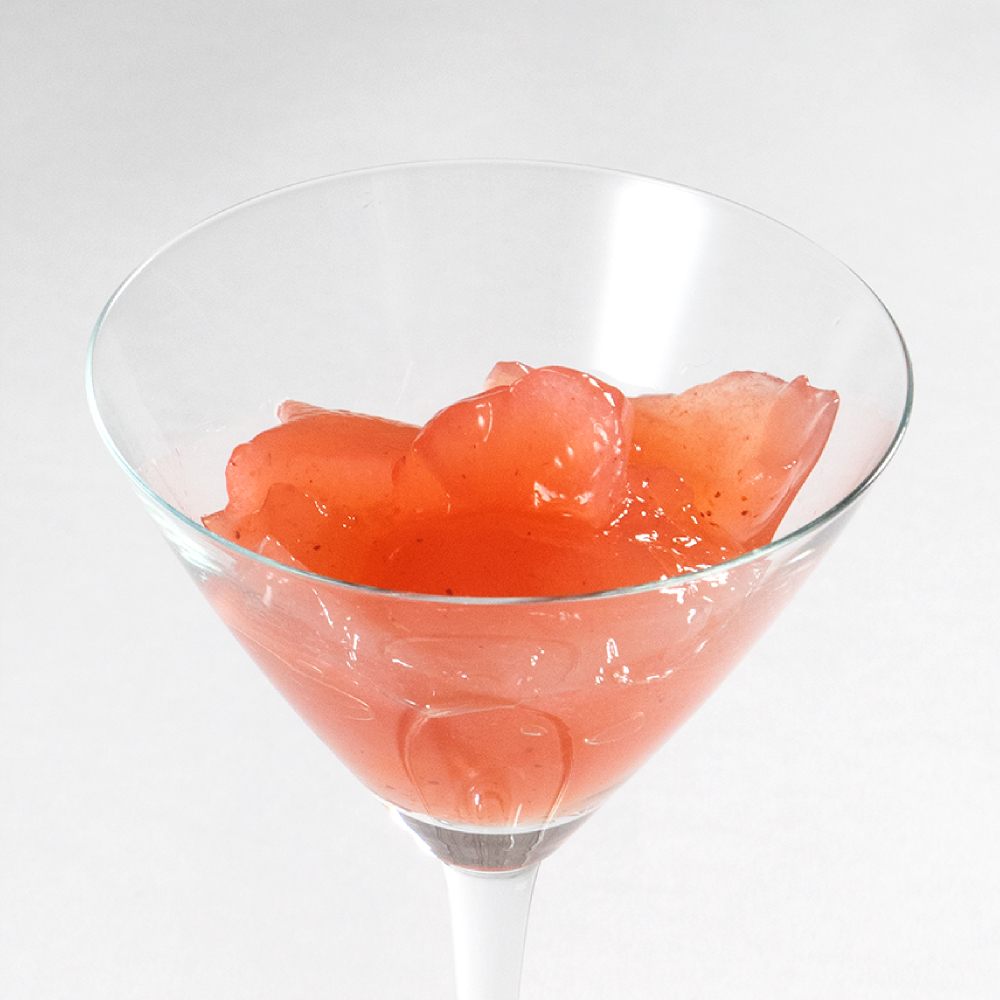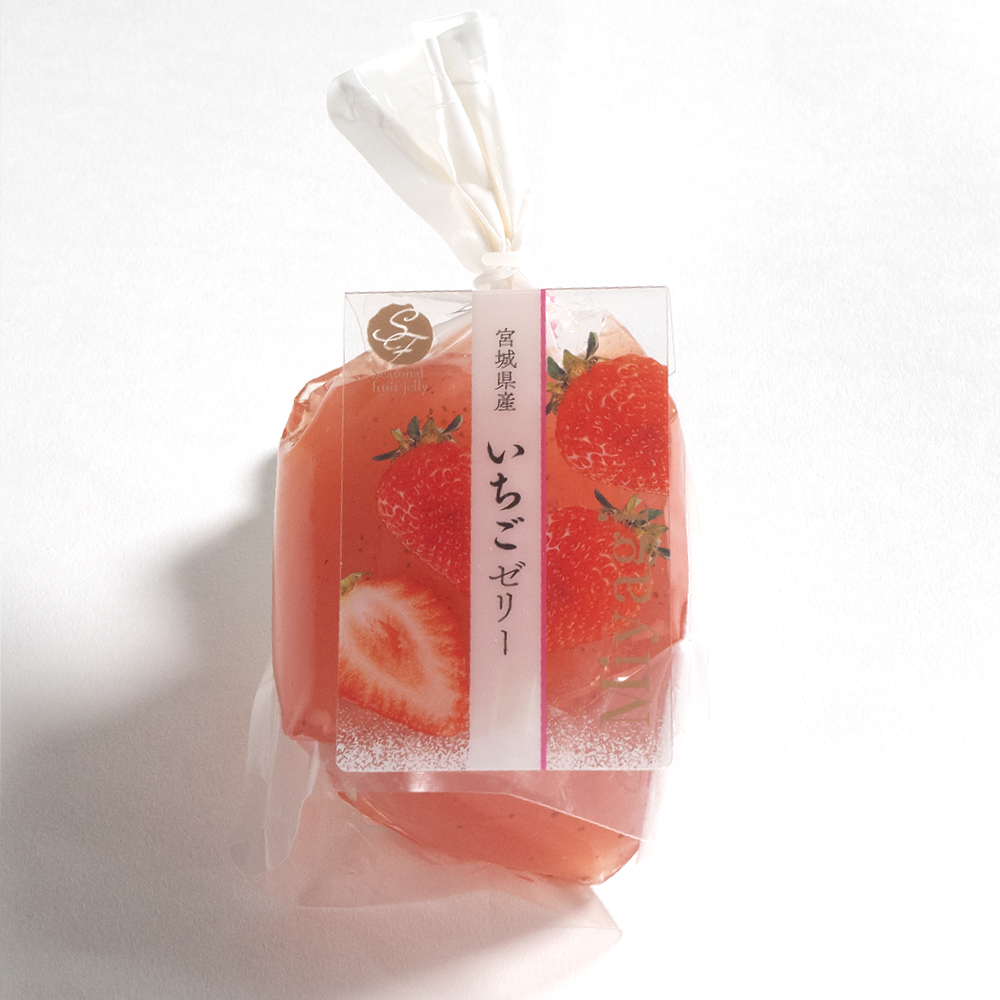

| Name | Strawberries Jelly |
| Contents | 170g |
| Sales period | Year-round (limited quantity) |
| Storage | Room temperature, cool and dark place (refrigeration is recommended) |
| Fruit used | Strawberries grown in Miyagi Prefecture (fresh puree) |
Strawberries have been found in the ruins of Thuan, Switzerland, dating back to 3,800 B.C., suggesting that wild strawberries have been used as food in many places since ancient times. In ancient Rome, strawberries were already cultivated, and it is said that several varieties were grown from the 14th to 16th century. Almost all strawberries distributed in Japan are of the Dutch strawberry variety, which was created by a Dutch farmer in the 18th century by crossing Virginia strawberries from North America and Chilean strawberries from Chile, which had been brought to European botanical gardens.
Strawberries were brought to Japan by the Dutch during the Edo period. It seems that strawberries became popular and began to be cultivated in earnest around 1872 (Meiji 5). The origin of the Japanese word "ichigo" is not clear, but there are descriptions in "Honzo Wamyo", "Wamyo Ruijusyo", and "Nihon Shoki" that seem to be ancient names, and it seems to have referred to wild strawberries in general before the introduction of Dutch strawberries.
Since the 1950's, the two most popular varieties have been "Toyonoka" in the west and "Nyoho" in the east, but the prefectural experiment stations have made remarkable improvements, and excellent varieties such as "Tochiotome" and "Akihime" are being produced one after another.
The annual production in Japan is about 200,000 tons, and it is grown all over Japan. The harvest season for open field cultivation is mainly from March to April, and for greenhouse cultivation it is from late October to May of the following year. Normally, the plants are grown in rows, but in greenhouse cultivation, the height of the seedlings is raised to reduce the burden, and hydroponic cultivation is also used.
The edible part is the well-developed sepals, and the small grains distributed on the surface are the fruits. Because of its sweetness, it is often positioned as a fruit, but because it is an herbaceous plant, it is sometimes treated as a vegetable. It is rich in vitamin C and contains anthocyanins, a type of polyphenol known as an antioxidant.
